Authors and Theorists
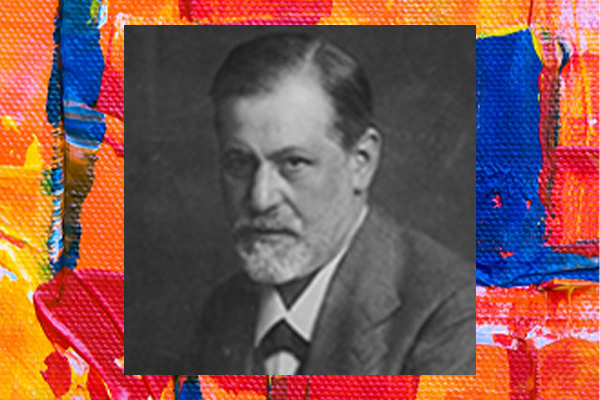
Sigmund Freud 1856 - 1939
Sigmund Freud was the founder of psychoanalysis and, over his immensely productive and extraordinary career, developed ground breaking theories about the nature and workings of the human mind, which went on to have an immeasurable impact on both psychology and Western culture as a whole.
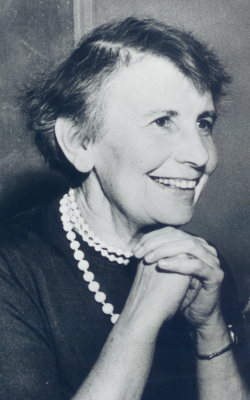
Anna Freud
Anna Freud was born in 1895 in Vienna, the sixth and youngest child of Sigmund Freud and Martha Bernays. Having shown a great interest in psychoanalysis by the age of fourteen, she initially trained as a primary school teacher and by 1922 became a Member of the Vienna Psychoanalytic Society. Her conceptual and clinical work has had a major influence in child and adult psychoanalysis, initially through establishing the Hampstead War Nurseries and then the Hampstead Child Therapy Course and Clinic in 1959 . The clinic was renamed the Anna Freud Centre after her death in 1982.

Melanie Klein
Melanie Klein was a controversial yet highly influential and powerful member of the British Psychoanalytical Society for over thirty years. Her theories about the development of a child's inner world transformed psychoanalysis and have had a deep and far-reaching impact
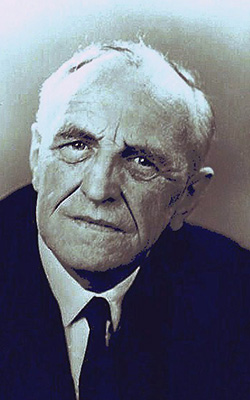
Donald Woods Winnicott
Donald Woods Winnicott was a paediatrician who was amongst the first cohort to train as a psychoanalyst in the late 1920s. His contribution to the evolution of psychoanalysis constitutes a significant shift from classical Freudian theory. From 1945 onwards, post Controversial Discussions, Winnicott’s scientific papers forge a particular psychoanalytic approach associated with the Independent Tradition (see Kohon 1989)
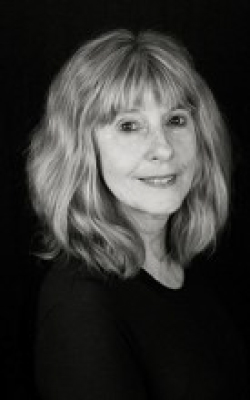
Jan Abram
Jan Abram is a training analyst and fellow of the British Psychoanalytical Society (BPAS). Alongside her private clinical practice, she is visiting professor in the Psychoanalysis Unit at University College London (UCL), where she is a course convenor and lecturer on the MSc in Theoretical Psychoanalytic Studies. She is also on the board of the International Journal of Psychoanalysis. As a leading scholar of D. W. Winnicott’s theory, Abram has travelled all over the world, and has published several books examining and elucidating his ideas. She spent eleven years involved with – and ultimately director of – the Squiggle Foundation, which was founded to communicate and promote Winnicott’s work.
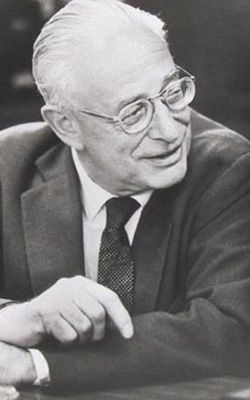
Michael Balint
Michael Balint was born Bergmann Mihály in Hungary in 1896. In 1924 he commenced analysis with Ferenczi and in time became a leading authority on Ferenczi’s work. Balint’s own research culminated in his final and most important book on regression, The Basic Fault: Therapeutic Aspects of Regression (Balint, 1968). Balint’s ‘The Doctor his Patient and the Illness’ (Balint, 1957), which continues to be very influential in medical practice throughout the world, applied ‘basic fault’ theory to the interaction between doctors and their patients, as fault lines in communication with unconscious affect, allowing the unconscious dynamic of the interaction to emerge. Michael Balint died on the 31st December 1970 whilst serving as President of the British Psychoanalytical Society.
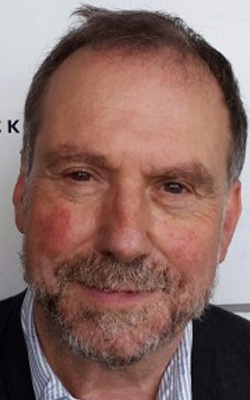
David Bell
David Bell (born 1950) has made contributions to psychoanalysis which combine depth and range. In demand internationally as a speaker and teacher, he lectures and publishes on psychoanalytic theory and technique and on the relationship between psychoanalysis and literature, philosophy and politics.
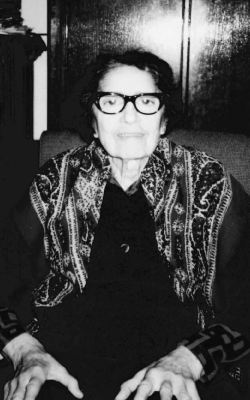
Esther Bick
Esther Bick’s best-known contribution to psychoanalysis is her discovery of the potential of infant observation undertaken within the home over the first year or two of life to underpin the growth of a psychoanalytic perspective within the observer.
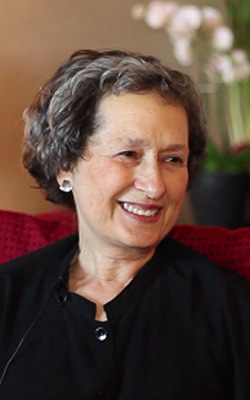
Dana Birksted-Breen
Dana Birksted-Breen was a training and supervising psychoanalyst in full-time private practice, as well as the former Editor in Chief of the International Journal of Psychoanalysis and former Editor of the New Library of Psychoanalysis. She taught, chaired conferences, and led clinical workshops in many countries around the world. She was elected as a Distinguished Fellow of the British Psychoanalytical Society in 2022.
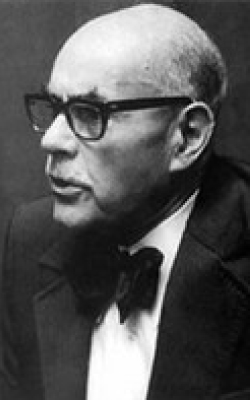
Wilfred Bion
Wilfred Bion was born in northwest India and was educated at boarding school in England. He fought in France in the Tank Regiment during the First World War and was awarded the DSO (Distinguished Service Order), and, by the French Government, the Légion d'Honneur. Around 1946 Bion entered into training analysis with Melanie Klein, and he became a full Member of the British Psychoanalytical Society in 1950. Bion is best known for the work stemming from his psychoanalysis of patients in psychotic states, by building on and expanding Klein’s concepts of projective identification and the two positions, paranoid-schizoid and depressive, in dynamic equilibrium, and by introducing the notion of Container-Contained (♀ ♂); and by elaborating a theory of thinking with emotional experience at its core.
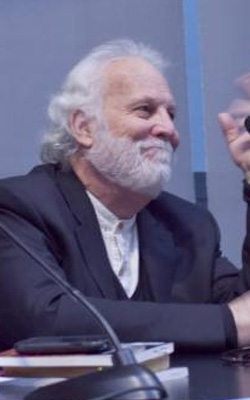
Christopher Bollas
Whilst having completed a first degree in history and a Phd in English Literature, Christopher Bollas was also drawn to psychoanalysis initially through his work with autistic and schizophrenic children. He subsequently trained and the Tavistock Clinic and then as a psychoanalyst at the British Psychoanalytical Society. Firmly rooted in the Independent tradition, he has published over 100 papers and his work covers psychoanalytic theory, clinical technique and psychopathology; he has applied psychoanalytic thinking to fields such as literature, architecture, history, social anthropology and politics. His central contribution to clinical technique has been his championing of the technique of free association so that the psychoanalytic process can provide a transformative experience by liberating the intrinsic creativity of the unconscious.
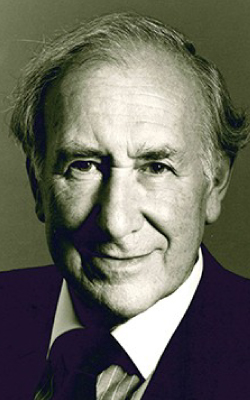
Eric Brenman
Eric Brenman was an astute and compassionate clinician, who stressed the need to acknowledge the reciprocity of the analytical relationship, so that both analyst and patient can recognise the value they have for one another. He explored the internal and external forces that can interfere, both in the analyst and in the patient, with a stable internalisation of a good object. The recovery of the good object relationship, which follows the working through of the depressive position, is the central task of every analysis.
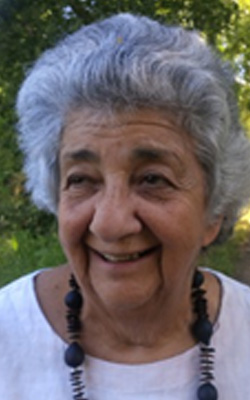
Irma Brenman-Pick
Irma Brenman Pick was a Distinguished Fellow, Supervising and Training Analyst and former President of the British Psychoanalytical Society. She was born and raised in South Africa, coming from an uneducated background but travelled to London in 1955 to train as a child psychotherapist and then in 1960 as a psychoanalyst. Brenman Pick was known among her colleagues as a psychoanalyst with a fine clinical intuition, coupled with a distinctive, lively and clear way of formulating from material, and for engaging with patients in a deep, multi-layered and nuanced way. she stressed the need for the analyst not only to receive projections, but also to do her own internal psychic work, and to consider how such projections from the patient interact with the analyst’s own internal world.
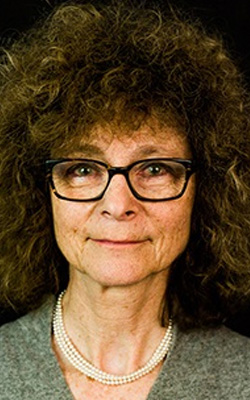
Catalina Bronstein
Catalina Bronstein is a Training and Supervising Analyst of the British Psychoanalytical Society, and its former President. She is also a visiting Professor in the Psychoanalysis Unit at University College London and at the Department of Psychosocial and Psychoanalytical Studies at Essex University. For the past twenty-eight years she has worked at the Brent Centre for Young People, and chairs a psychotherapy workshop there. She is also part of numerous international workshops and committees.
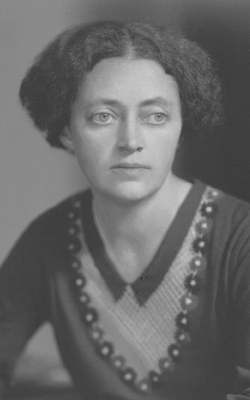
Marjorie Brierley
Marjorie Brierley was one of the indigenous members of the British Psychoanalytical Society and made a significant contribution to the development of psychoanalysis both in her writings as well as the key role she played in the Controversial Discussions (King & Steiner 1992).
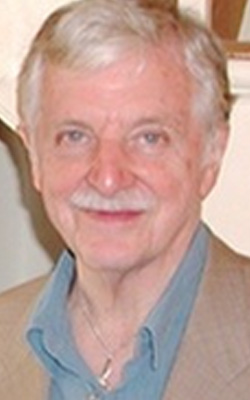
Ron Britton
Ron Britton's work was characterised by his preoccupation with truth; with what is real, and how we know this. His answer followed Keats, ‘nothing ever becomes real till it is experienced’ and his contributions followed on from this.
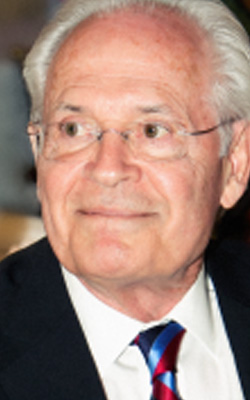
Donald Campbell
Donald Campbell is a training and supervising analyst and Distinguished Fellow of the British Psychoanalytical Society (BPAS). He was President of the BPAS from 1999 to 2003, and Secretary General of the IPA from 2003 to 2005. Alongside his private practice, a major element in his career has been the 30 years of work as a child, adolescent and adult psychoanalytic psychotherapist at the Portman Clinic in London, a National Health Service outpatient facility where he served as Chairman between 1991 and 1994. He has taught, supervised and given papers in over 50 cities in Europe, Australia and the United States. His 60 journal articles and book chapters have enquired into such subjects as violent behaviour in adolescents and adults, aggression, delinquency, the role of the father in pre-suicidal states of mind, fetishism, splitting of the ego, child sexual abuse, adolescent development, doubt, perversion, and horror film monsters.
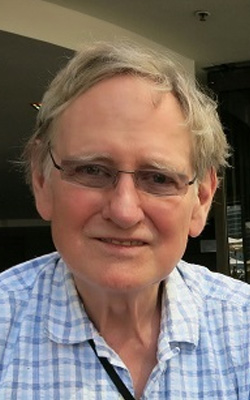
Patrick Casement
Patrick Casement is a retired fellow of the British Psychoanalytical Society. He worked as a psychoanalyst for more than forty years, and has written several books and numerous papers on clinical technique. Most prominent among these is On Learning from the Patient, which, since its publication over thirty years ago, has been translated into many languages and used across the world by professionals, both in psychoanalysis and related fields.
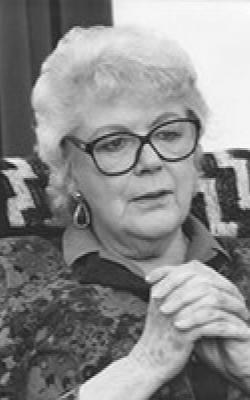
Nina Coltart
Nina Coltart initially read Modern Languages at Somerville College, Oxford, but by the time she graduated had decided that she wanted to follow the family tradition and to train as a doctor. She qualified in 1957 at St Bartholomew’s Hospital and after several clinical jobs, in 1961 she set up in private practice as a psychotherapist, concurrently training as a psychoanalyst with the British Psychoanalytical Society. She qualified in 1964 and from 1972-82 she was Director of the London Clinic, which interviews and assesses potential training cases for students of the British Society. She became a training analyst in the Independent Group in 1971, and was Vice-President of the British Society and Chairman of its Board and Council from 1984-87. She published a few papers, and three books. Slouching toward Bethlehem and Further Psychoanalytic Explorations; How to Survive as a Psychotherapist, and The Baby and the Bathwater. All three books are written in a clear, lively, personal style which is as readily accessible to lay people as it is to professionals. All of them are an excellent starting-point for people who want to find something out about psychoanalysis and psychotherapy, since they are written without pretension or jargon.
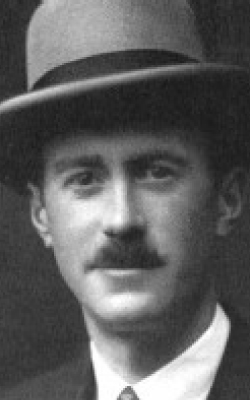
Ronald Fairbairn
William Ronald Dodds Fairbairn was born in Edinburgh in 1889,Apart from his time studying overseas, and the years he spent fighting in the First World War, Fairbairn always lived and worked in Edinburgh. He is now widely known as the ‘father of object relations’, due to his important innovations and developments in that branch of psychoanalytic theory. In 1931 Fairbairn became an associate member of the British Psychoanalytical Society on the basis of his psychoanalytic writings to date and he became a full member in 1939. For many years he was the sole analyst working in Edinburgh and had little contact with the life of the British Society in London. He submitted a short paper as part of the Controversial Discussions in the early 1940s but generally worked in a state of unusual isolation and, indeed, with an unusual degree of independence. Many believe that this geographical and professional separateness from the Society contributed to the striking originality of Fairbairn’s concepts. Nevertheless, his ideas were deeply informed by his colleagues in London, and his work, in turn, went on to have a profound influence on British object relations theory, becoming one of the key figures of the Independent tradition.
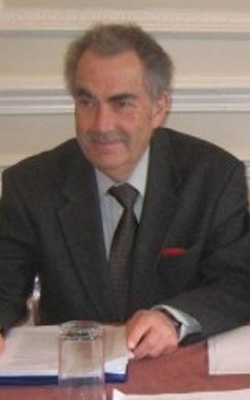
Michael Feldman
Michael Feldman initially studied medicine and psychology and was until 1998, consultant psychotherapist at the Maudsley Hospital in London. He is a training analyst in the British Psychoanalytical Society and has made some notable contributions to psychoanalytic theory, but he is known above all for his keen and sensitive clinical insight. He was elected as a Distinguished Fellow in 2018. As a teacher and supervisor his colleagues value Feldman for his modesty, warmth and humour – together with a certain conviction that underlies, perhaps even underpins, his willingness to entertain doubt. He has developed a style of working that places a specific emphasis on sensing what is alive in the session, following minute by minute the interaction between patient and analyst.
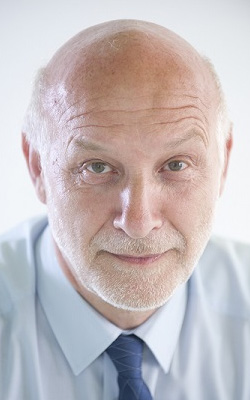
Peter Fonagy
Peter Fonagy is a training and supervising analyst in the British Psychoanalytical Society, as well as Professor of Contemporary Psychoanalysis and Developmental Science at University College London (UCL), Head of the Research Department of Clinical, Educational and Health Psychology at UCL and National Clinical Advisor to NHS England for Children’s Mental Health. Fonagy believes psychoanalysis can be enormously helpful in enabling people to think and feel in ways that would otherwise be inaccessible to them; in other words, in expanding their capacity for meaning making and learning. Epistemologically, his ambition is to maintain psychoanalysis in concert with other disciplines that investigate the human mind, and to try to reconcile the various experiences of human beings into a singular mode of understanding. Above all, he believes that psychoanalysis should remain in dialogue with what we know about the mind from other disciplines, including neuroscience, psychology, sociology, anthropology and increasingly computer science. In his view, psychoanalysis is currently the best psychology we have.
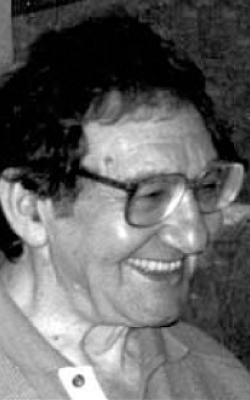
Mervyn Glasser
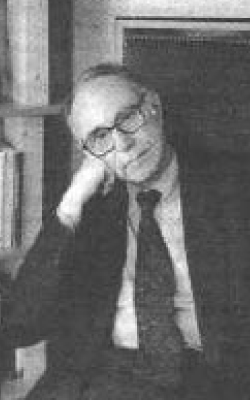
André Green
André Green was born in 1927 in Egypt. In 1946, already attracted by psychiatry, he travelled to Paris to study medicine, completing the psychiatry exams in 1953. He established links with St Anne’s Hospital, a unique centre at that time for multidisciplinary encounters between psychiatrists, psychologists and anthropologists. He was highly inspired by Henri Rey who was resident there from 1925 to 1965. In 1965, after completing his analytic training, Green became a member of the Paris Psychoanalytic Society (SPP) of which he was President from 1986 to 1989. From 1975 to 1977 he was a Vice-President of the International Psychoanalytical Association and from 1979 to 1980 a Freud Memorial Professor at University College London. He was elected an Honorary Member of the British Psychoanalytical Society. Two threads permeate Green’s writings: on the one hand, the relevance of the paternal derived from Lacan’s work and on the other, the concern with the maternal connected, in different ways, with the work of Winnicott and Bion.

Stephen Grosz
In 2013, Stephen Grosz published his first book, The Examined Life, a collection of psychoanalytic insights gathered over twenty-five years of clinical work. The book was met with acclaim on both sides of the Atlantic. Writing in the New York Times, Michiko Kakutani said, 'The Examined Life … shares the best literary qualities of Freud’s most persuasive work. It is … an insightful and beautifully written book … a series of slim, piercing chapters that read like a combination of Chekhov and Oliver Sacks.'
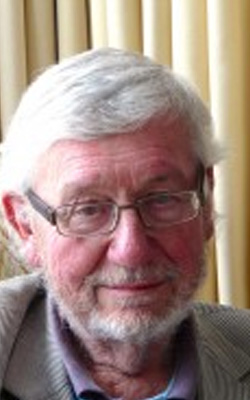
Robert Hinshelwood
Bob Hinshelwood has been a prolific writer for the last 35 years, whose wide-ranging work covers clinical and theoretical psychoanalysis as well as the application of psychoanalytic thinking to other fields, especially groups, organisations and social science.

Ernest Jones
Alfred Ernest Jones was born in 1879, in Gowerton, Wales, and studied at Cardiff University and UCL. He established both the British Psychoanalytical Society and the American Psychoanalytic Association, wrote a three-volume biography of Sigmund Freud, and played a key role in helping Sigmund and Anna Freud escape Nazi Austria, as well as numerous other continental analysts.
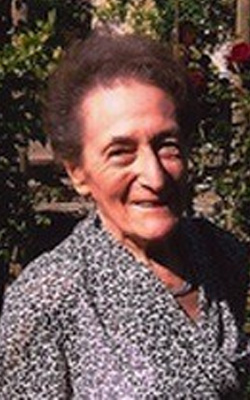
Betty Joseph
Betty Joseph was a training and supervising analyst and child analyst in the British Psychoanalytical Society. She was one of the leading Kleinian thinkers of her generation along with Bion, Rosenfeld and Hanna Segal and an inspiring presence in the British Society for over 60 years. She was very influenced by Bion whose originality and vision always impressed her. What particularly distinguished Joseph's work was her devotion to technique. She believed that only by paying the most rigorous attention to what the patient is not only saying but doing in the analytic session, together with the analyst's own countertransference, can psychic reality emerge.
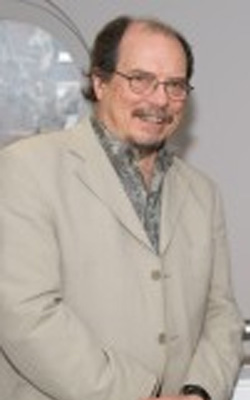
Gregorio Kohon
Gregorio Kohon was born in Buenos Aires, Argentina. After studying law, literature and philosophy at university, he qualified in the end as a Clinical Psychologist. He is also a poet and novelist. He was elected as a Distinguished Fellow in 2022. For Kohon, the assertion that psychoanalysis, like art, resists simplification is woven like a golden thread though his work. Kohon’s writings have been translated into French, Italian, Polish, Swedish, Portuguese, German, Japanese and Spanish.
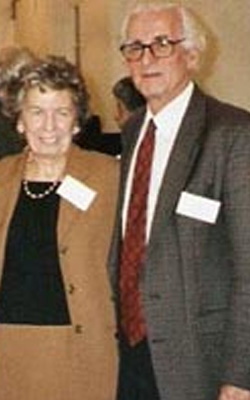
Eglé Laufer
Egle Laufer, who worked with her husband Moe at the Brent Adolescent Centre, and who co- wrote their major book, Adolescence and Developmental Breakdown, brought a specific focus to the theoretical and clinical significance of the body, in particular, to the girl’s adaptation to the adult feminine body.

Moses Laufer
Moses Laufer (1928-2006) was born in Montreal to parents who had emigrated to Canada from Poland. Having trained as a social worker, he worked in Israel with immigrants struggling to adapt to the new culture in which they found themselves. From Israel he came to England to train as an adult psycho analyst, working with adolescents in the East End while he trained. Moe Laufer cared passionately about adolescents and concerned himself with finding ways in which to apply and develop psychoanalytic understanding of the adolescent process. This eventually led to establishing the Brent Adolescent Centre in 1967 which continues to this day. Moe Laufer’s great contribution to psychoanalytic theory derives from the study of adolescent development. According to his analysis, the fundamental task of adolescence is the integration of the adult sexual body with all other difficulties, with study, work, separation from home, deriving from problems in integrating the changing body. He published widely with his views most thoroughly explicated in Adolescence and Developmental Breakdown (1984) coauthored with his wife Egle Laufer.
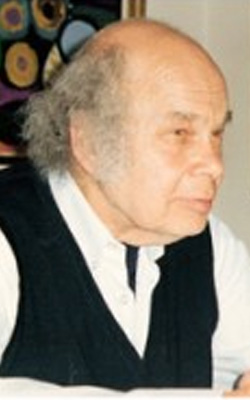
Donald Meltzer
Donald Meltzer’s many original contributions to psychoanalysis grew particularly from his capacities for very detailed clinical observation, his involvement in child analysis and his interest in aesthetics and philosophy. Most widely used are his theories of an intrusive form of projective identification, of autistic two-dimensionality and of what he termed the ‘aesthetic conflict’ at the start of life.
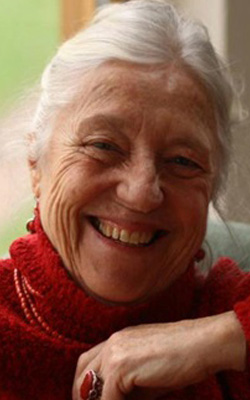
Juliet Mitchell
Juliet Mitchell trained as a psychoanalyst in the 1970s and worked full time in private practice in London and then in Cambridge where, in 1996 she combined this with an academic post. Most known for her groundbreaking book Psychoanalysis and Feminism, her later writing on sexuality and psychoanalysis, asserted again that psychoanalysis is not prescribing how men and women do or should live their lives but instead it analyses how they come to be such beings in the first place (1982, p3). Her psychoanalytic work is rooted in knowledge of many traditions, having written and edited highly regarded texts on Lacan (Feminine Sexuality 1982) and Klein (Selected Melanie Klein 1986). And she is equally at home in the writings of Donald Winnicott. But the backcloth to all her work is her thorough knowledge of Freudian texts.
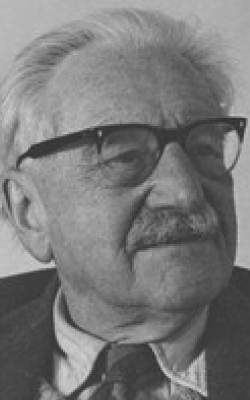
Roger Money-Kyrle
Roger Ernle Money-Kyrle was a highly renowned and influential psychoanalyst with a background in philosophy and a wide-ranging intellect. His work in psychoanalysis was characterised by its breadth of scope, as well as its continuity with previous developments in psychoanalysis. His writing emerged as much from his deep thinking about philosophy, ethics and politics as from his clinical practice; it remains a rich psychoanalytic exploration of both the individual’s inner life, and the ways in which the individual psyche relates to the broader sphere of human society. Money-Kyrle lived through two catastrophically destructive wars, and over his career he wrote numerous papers about conflict, political power and the human urge for violence. His archive is held by the Wellcome Trust in London.
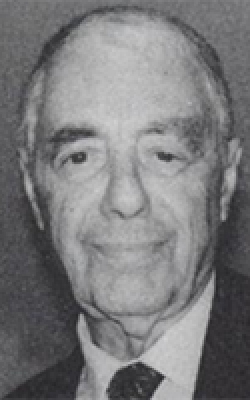
Adam (Amedeo) Limentani
Born in Rome, Adam Limentani was forced to emigrate to England in 1938. He worked as a psychiatrist before training in the 1950s within the Group of Independent Analysts. He
subsequently worked for many years at the Portman Clinic and in private practice and was the President of the British Society from 1974-1977. He later served as President of the International Psychoanalytic Association from 1983-86. He wrote widely on a range of areas including the concept of acting out and types of homosexuality, whilst always combining a critical and integrative approach and always eschewing over-simplifications. This theoretical stance was also evident in his clinical approach, in which he combined a tolerance for human conflict and suffering with a depth of understanding of the complexities of psychic life. His book: “Between Freud and Klein” (1989) emphasises his preferred clinical and theoretical position.
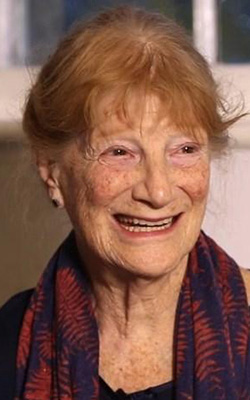
Edna O'Shaughnessy
Edna O’Shaughnessy was a Distinguished Fellow and Training and Supervising Analyst of the British Psychoanalytical Society. She came to psychoanalysis from a background of philosophy. Her writing conveys the clarity of her thinking and also the depth of her understanding and ability to think laterally about complex issues including dilemmas for both patient and analyst. The two areas of the defensive organisations of the personality, and the abnormal superego often came to the fore in her work. A selection of her most well-known papers is entitled Inquiries in Psychoanalysis: Collected papers of Edna O'Shaughnessy (The New Library of Psychoanalysis) Ed R. Rusbridger (Routledge 2014).
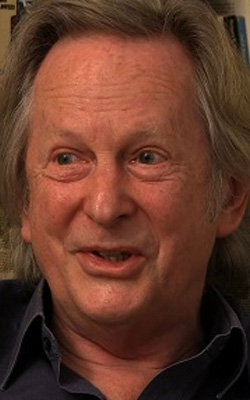
Michael Parsons
Michael Parsons is a Distinguished Fellow of the British Psychoanalytical Society and member of the French Psychoanalytic Association. Initially trained as a psychiatrist, he qualified as a psychoanalyst in 1982 and as a training analyst in 1990. His work is characterized by his “bringing together” wide ranging disciplines which give his work an intellectual weight, lightly worn. Central to his clinical theory is his focus on listening. He writes about what he calls the analyst’s ‘internal setting’ and the centrality of the capacity to listen. In ‘Living Psychoanalysis’ (Parsons 2014) he elaborated all the complexity of the theory or the clinical moment via a myriad of homely and uncanny routes. It is a book that is engaging for psychoanalyst and the lay reader and captures his ability to grapple with complex matters in an accessible manner.
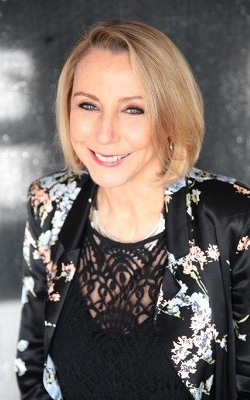
Rosine Perelberg
Coming to psychoanalytic training in the 1980’s from an academic background in social anthropology, as well as many years’ experience working in family therapy services, Rosine Jozef Perelberg has established herself over the last three decades as one of the most prominent and influential writers and clinicians in contemporary British psychoanalysis. She is the former President of the British Psychoanalytical Society. Perelberg has written and edited 12 books, the latest being Sexuality, Excess and Representation, and for the editing of Psychic Bisexuality – a British-French Dialogue, she received the American Board and Academy of Psychoanalysis 2019 book prize for the best edited book. She has served on many editorial boards including the International Journal of Psychoanalysis.
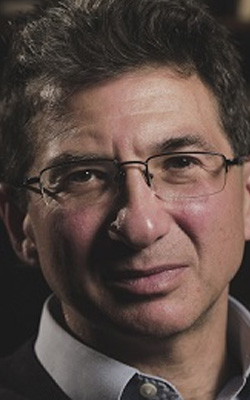
Daniel Pick
Daniel Pick is a psychoanalyst in the British Psychoanalytical Society and a professor of history at the University of London. Alongside his clinical practice, he teaches and conducts research in Birkbeck’s Department of History, Classics and Archaeology, collaborating with colleagues in several other departments. Pick has been profoundly influenced by Freud, Klein, Bion, and contemporary Kleinian thinkers in London, as well as other clinicians, writers and theorists from various schools of thought, in the UK and abroad. He has written about analytic theory historically, but analytic theory has also informed Pick’s historical investigations into the interaction of individuals and groups, the struggle for and against freedom of mind, and the many guises assumed by anxiety in psychic social life. As both psychoanalyst and historian, Pick is constantly engaged with the question of how the past bears upon the present: whether a history is a personal one, or a national or cultural one, it at once shapes us and is shaped by us in its telling.
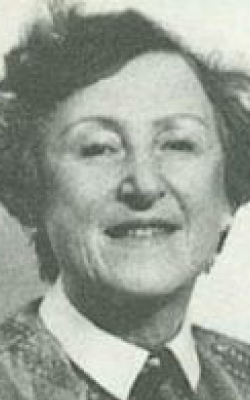
Dinora Pines
Dinora Pines trained as a medical doctor during the Second World War, having obtained a first degree in modern languages. She worked in general practice and as a dermatologist before training as a psychoanalyst. Her experiences as a doctor facilitated her developing interest in listening to her patients and especially to what was not expressed verbally but rather through their bodies. After qualification as a psychoanalyst, she worked with adolescents at the Brent Adolescent Centre for some years as well as in private practice. She subsequently became a Training and Supervising analyst in the British Society. She was an active member of the Society, working on the Education committees, teaching and supervising. She was an important member of the Contemporary Freudian Group and her early interest in women’s psychology and psychosomatic illness developed over many years, culminating in the publication of a book of her papers in 1993: “A woman’s unconscious use of her body.” [republished in 2010].
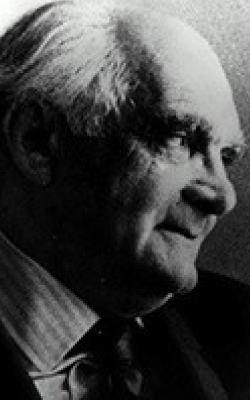
Henri Rey
Born in Mauritius in 1912, Henri Rey was a shy man with French ebullience. He did not give a paper until he retired but his important contributions are available in his major work, Universals of Psychoanalysis in the Treatment of Psychotic and Borderline States (Free Association Books 1994). Central to this book and to his basic approach to patients is the recognition that the mind is conceptualised spatially. He described how many patients feel prematurely pushed out of the maternal space, before they are ready to face the facts of life. This aided the understanding of borderline phenomena, as did his concepts of endo and exo- skeletons in their role in identity formation.
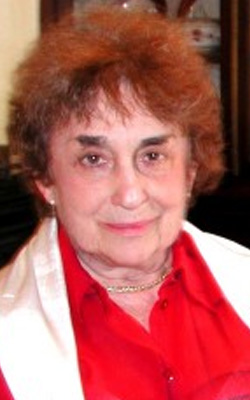
Ruth Riesenberg-Malcolm
Ruth Riesenberg-Malcolm was an influential member of the group of senior Kleinian psychoanalysts who developed the application of the theories of Melanie Klein and Wilfred Bion. She was an admired teacher in the UK and internationally. She was especially valued in Spanish speaking countries where she could teach in her native language. She presented papers at congresses and symposiums elaborating concepts as they are found in clinical practice. Her collected papers, On Bearing Unbearable States of Mind, is a handbook of Kleinian clinical practice, illustrating how to understand and put these theories to use.
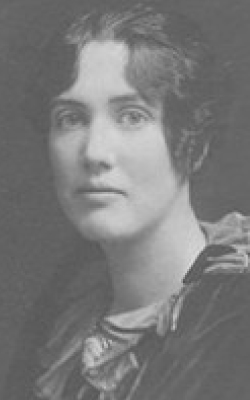
Joan Riviere
Although her contributions have not been adequately recognised, Joan Riviere contributed much to psychoanalysis. Through her innovative writings and teachings, she originated many themes in psychoanalytical thought that continue to be explored today. Her literary style was such that she could present and interpret Melanie Klein’s writings ‘with a vividness that I think neither Mrs Klein nor any of her collaborators achieved’ (Hanna Segal, ‘Foreword’, Joan Riviere: The Inner World and Joan Riviere, Hughes, 1991). Freud was most appreciative of her ability to translate his works in a manner and with a sensitivity that surpassed those of others. Simultaneously, whilst she greatly admired Freud’s capacity to explore the unconscious, she took him to task for his views of female sexuality. Riviere’s contributions to the Controversial Discussions in 1940 were also invaluable. Her ability to make complex theoretical insights persuasively straightforward helped to resolve the difficulties and aided the development of psychoanalysis as a whole.
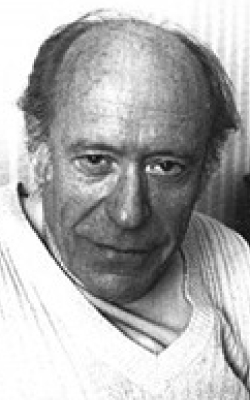
Herbert Rosenfeld
Herbert Rosenfeld alongside Segal and Bion, made several important post- Kleinian innovations in his clinical and theoretical contributions, drawing on the rich lessons from his experience of treating schizophrenic patients. He charted pathological processes which emerge early in the paranoid-schizoid position and can severely impede later ego-development. These also throw light on schizoid states of mind that are present in borderline and neurotic patients. Rosenfeld was known for his unique capacity to put himself imaginatively into his patients' shoes and understand their experience from their position. His many papers presented ideas on states of depersonalisation and confusion, pathological narcissism, and the links between trauma and narcissism.

Priscilla Roth
Priscilla Roth is a training and supervising analyst with the British Psychoanalytical Society. Following her degree in psychology at Berkeley, she worked as a research assistant at the University of California at Berkeley. In the early 1970s she moved to the UK and trained first as a child and adolescent psychotherapist at the Tavistock Clinic, London, and shortly thereafter as an adult psychoanalyst with the British Psychoanalytical Society. She was elected as a Distinguished Fellow in 2022. Her background experience as a child psychotherapist working in the public health service for many years is evident in her work with adults. Her clinical work illustrates a profound understanding of the complex interplay between the impact of early developmental experiences and the role of unconscious phantasy in shaping the development of the mind.
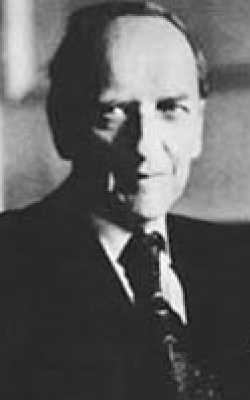
Charles Rycroft
Charles Rycroft qualified as an Associate Member in 1949, a Full Member in 1952, and became a training analyst and a member of the Training Committee in 1954. He was analyzed by Ella Sharpe and, following her death, by Sylvia Payne in an analytic lineage that dates back to Hanns Sachs, and was supervised by Marion Milner, whose clinical thinking he valued no less than what he saw as her warmth and distinctive approach to the irrevocable uniqueness of the patient. He consulted Milner on matters of difficulty throughout his life. Rycroft produced a considerable body of theoretical work in the Independent tradition of British object-relations theory. A complete bibliography, extending over almost 40 years from 1951 to 1990, is included in his final collection of essays Viewpoints (1991). The list includes two book-length studies, Anxiety and Neurosis (1968), an attempt to explain psychic phenomena in biological terms (including the adaptive nature of anxiety), and the book he valued most amongst his works, The Innocence of Dreams (1979); three volumes of essays, Imagination and Reality (1968), Psychoanalysis and Beyond (1985), and Viewpoints (1991); a critical monograph, Reich (1971); and, perhaps his best-known book, A Critical Dictionary of Psychoanalysis (1968; revised with a new Introduction in 1995). As Margaret Arden pointed out in her obituary in the International Journal of Psychoanalysis, every paper Rycroft wrote contained “significant original ideas”.
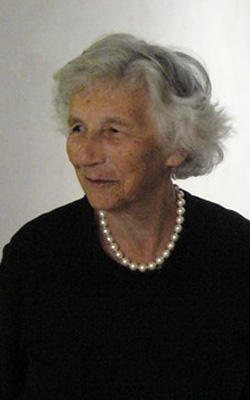
Anne-Marie Sandler
Anne-Marie Sandler 1925-2018) was a training analyst in adult, adolescent and child analysis and a Distinguished Fellow at the British Psychoanalytical Society. She was the Director of the Anna Freud Centre from 1993 to 1996. She was also a former President of the British Psychoanalytical Society (1990 – 1993), and of the European Psychoanalytic Federation (1983 – 1987) as well as Vice-President of the International Psychoanalytical Association (1993 – 1997). In 1998 she was awarded the prestigious Sigourney Prize for Outstanding Achievement in Psychoanalysis.
Anne-Marie published a number of seminal papers with Joseph Sandler in which they reviewed basic psychoanalytic concepts. She had a unique capacity to establish bridges between people and traditions, and she has been an influential teacher and supervisor. With her compassion for her patients, her sharp intellect, and her clarity of thinking, she was one of the most popular supervisors for the training and fellowship of the British Psychoanalytical Society.
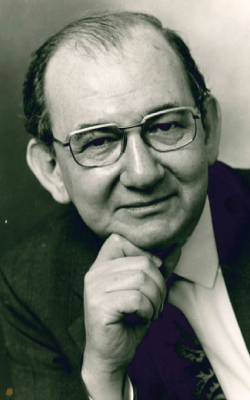
Joseph Sandler
Joseph Sandler completed his PhD at the Institute of Psychiatry in 1950, before taking further training in medicine at University College Hospital from 1950 to 1955. He was accepted for training at the Institute of Psychoanalysis in 1949 and finished in 1952. He became Full Member in 1958 and a Training Analyst of the British psychoanalytical Society in 1961. He was Editor of the British Journal of Medical Psychology, a post he held from 1968 to 1974; Editor of the International Journal of Psycho-Analysis from 1968 to 1978 and was elected President of the International Psychoanalytical Association in 1989. He held the Sigmund Freud Professor of Psychoanalysis Chair at the Hebrew University of Jerusalem from 1979 to 1985, and the Freud Memorial Chair at University College London from 1984. He was made Emeritus Professor at the University in 1992. With his wisdom and incomparable scholarship, Joseph Sandler made fundamental contributions to both the theory and practice of psychoanalysis. His deep understanding of human nature and respect for his patients was expressed in his practice of psychoanalysis: he stressed the part played by feelings of wellbeing in the regulation of mental functioning. His vast body of works are amongst the most often cited in the psychoanalytic literature.
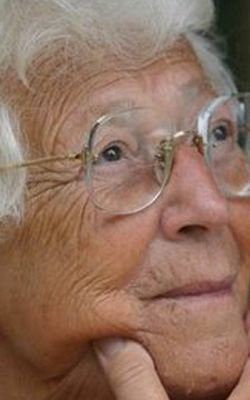
Hanna Segal
Hanna Segal was one of a small group of major thinkers, along with Bion and Rosenfeld whose influence has remained central to the development of psychoanalysis and whose early work has been described as one of “pioneering optimism”.
Segal’s influence was confirmed from an unexpected quarter when it was discovered that, unbeknown to her, this quotation from her paper ‘A psychoanalytical approach to aesthetics’ was used as a rallying call for the World Trade Center Mural Project.
“It is when the world within us is destroyed, when it is dead and loveless, when our loved ones are in fragments, and we ourselves in helpless despair - it is then that we must recreate our world anew, reassemble the pieces, infuse life into dead fragments, recreate life.”
The project was set up following the terrorist attack of 11 September 2001 with the aim of creating a mural, 70 feet high, on the Equitable Building in New York as a symbol that life could survive destruction.
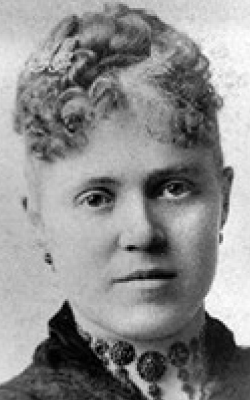
Ella Sharpe
Ella Sharpe initially studied literature, drama and poetry at Nottingham University and worked as a teacher until her early forties. Her interest in psychoanalysis developed from her love of literature and her teaching work with young people. She became a member of the BPAS in 1921 and was an active member as a teacher, supervisor and training analyst.
Ella Sharpe’s appeal is instantly understandable when one reads her papers. She possessed a directness and candour which is rare in psychoanalytic writing. She is probably best known now for her seven papers on technique. In these she demonstrates how she placed personal creativity and the imaginative use of the self at the heart of the psychoanalytic process. She believed that clinical practice was shaped by the internal contents of one’s mind, and by the presence in that mind of the capacity for movement and elasticity. Understandably therefore, she was involved in and made significant contributions to the Controversial Discussions.
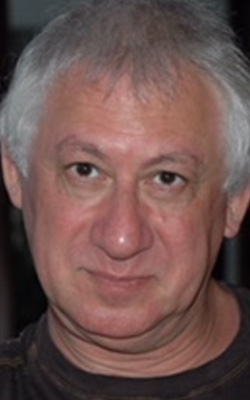
Jonathan Sklar
Dr Jonathan Sklar is an Independent training analyst and fellow in the British Psychoanalytical Society (BPAS) and has worked in private practice for over thirty years. He began his career as a psychiatrist, later training in psychotherapy at the Tavistock Clinic and in psychoanalysis at the Institute of Psychoanalysis (IoPA).
Sklar has lectured, supervised and taught in the Serbian, Moscow, Polish, Czech, Romanian and Croatian Analytic Societies as well as the Psychoanalytic Institute of Eastern Europe (PIEE). Between 2007 and 2011 he was Vice President of the European Psychoanalytic Federation, where he played a central role in the development of psychoanalytic training in Eastern Europe. He was on the board of the International Psychoanalytic Association (IPA) 2015 to 2019. Throughout his career, Sklar has found abundant inspiration in the work of Freud, Ferenczi, Michael and Enid Balint, Winnicott, and Bion, among numerous others. He has been committed to resurrecting forgotten or ignored analysts, and re-examining their contributions to analytic theory. In particular, he has worked to reinstate Sándor Ferenczi as a highly significant early theorist, in the process exploring his sustained and fruitful dialogue with Sigmund Freud.
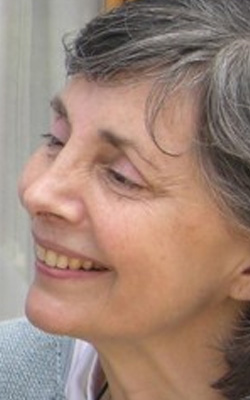
Ignês Sodré
Ignês Sodré was a training and supervising psychoanalyst of the British Psychoanalytic Society. She was born and brought up in Brazil, where she qualified as a clinical psychologist. In 1969 she moved to London to train at the Institute of Psychoanalysis. She was elected as a Distinguished Fellow in 2022.
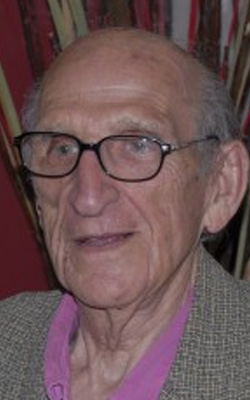
Leslie Sohn
Having initially trained as a psychiatrist, Leslie Sohn’s interest in psychoanalysis was inspired by Clifford Scott and William Gillespie whilst working at the Maudsley Hospital. He qualified as a psychoanalyst in 1952 and over time also a training analyst. In the course of a period of 62 years seamlessly employed by the NHS, Dr Sohn assessed and treated hundreds of patients and supervised and inspired hundreds of juniors, from medical and other disciplines, excelling as a clinician and teacher. In particular, his attachment to the Medium Secure Unit at the Bethlem Royal Hospital (Dennis Hill Unit) revolutionised the way of thinking and understanding violent behaviour in mentally disordered offenders and in particular, those suffering from psychotic illnesses. His paper ‘Unprovoked Assaults’ was particularly influential in providing a way of understanding the apparently inexplicable, sudden and often bizarre, violent offences carried out by mentally ill patients, indicating that there was indeed a provocation, albeit a complex psychical one arising from traumatic historical events, where the victim of the assault becomes a suitable external recipient for the extreme projections that are enacted bodily through the violent act.
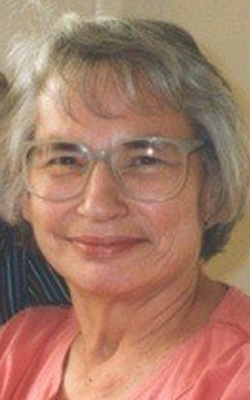
Elizabeth Spillius
A training analyst and Distinguished Fellow of the British Psychoanalytical Society, Elizabeth Spillius was one of the world’s foremost Klein scholars. She is remembered for her clinical work, her teaching in the UK and abroad, her work in the Klein archive, and for the wealth of books and papers she produced over many years. She was always interested in the evolution and fate of ideas, and retained her anthropological ability to reflect on Kleinian ideas and their development, rather than falling into the ever-present danger of becoming tribally wedded to them. She wrote about the evolution of Kleinian technique, and about variations in the way her colleagues past and present formulated their ideas and used them clinically. Her sympathetic and scientific observing stance was always fresh and this was particularly important when working in a field where the superego can all too easily become vicious and omniscient.
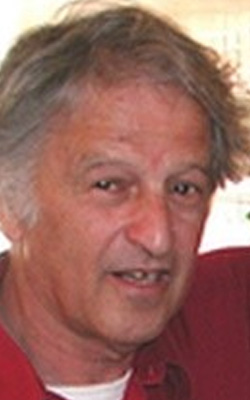
John Steiner
John Steiner’s clear style of writing, emerging from observations made in his clinical practice, provides depth of insight, sensitivity and a real interest and concern for his patients. One measure of Steiner’s contribution to psychoanalysis is the number of terms and expressions he used that are now common currency, such as ‘pathological organisations of the personality’, ‘psychic retreats’, ‘emerging from psychic retreats’, ‘seeing and being seen’, and ‘patient-centred and analyst-centred interpretations’.
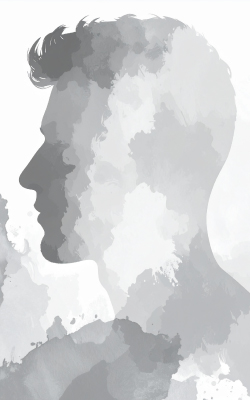
Harold Stewart
Harold Stewart was an eminent psychoanalyst and leading member of the Independent Group in the British Psychoanalytical Society. His sharp intellect, clinical perceptiveness and forceful and yet unassuming personal style were always appreciated. Stewart’s contributions, gathered in his book Psychic Experience and Problem of Technique, were characterised by the detailed attention paid to the clinical situation in psychoanalysis. Divided in two parts, Theory and Technique, the collection of his papers reflect his major interests and principal subjects: the experience of dreams and the situation of transference; the notion of inner space; the experiencing of thinking; the important theme of transference interpretation, its different modalities and types; other agents of psychic change in psychoanalysis, and perhaps essential to his thinking, the concepts of the basic fault (Balint), and the question of therapeutic, benign and malignant regressions in the process of psychoanalytic treatment.
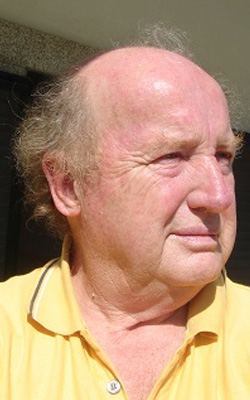
Neville Symington
Neville Symington was a psychoanalyst and Fellow of the British Psychoanalytical Society (BPAS). He trained in the Institute of Psychoanalysis (IoPA) and worked in the Adult Department of the Tavistock Clinic from 1977 until 1985, when he emigrated to Sydney, Australia. Between 1999 and 2002 he was president of the Australian Psychoanalytic Society and, in 2007, set up a clinical organization called Psychotherapy with Psychotic Patients (PPP). He wrote twelve books and many clinical papers and, in 2013, won the Sigourney Award, which recognises contributions to the advancement of psychoanalysis. He also taught around the world for many years, including in the USA, Denmark, Israel, India and Poland. He found teaching immensely enjoyable, and also very useful as a way of clarifying, developing and refining his ideas.
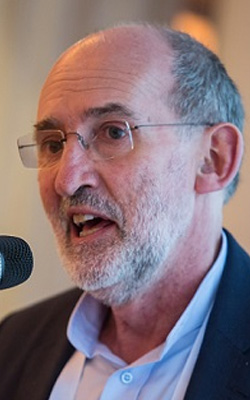
David Tuckett
David Tuckett is a Distinguished Fellow of the Institute of Psychoanalysis, and currently Professor and Director of the Centre for the Study of Decision-Making Uncertainty at University College London (UCL). As an undergraduate he studied Economics and Politics with Sociology at the University of Cambridge, during which time he became very interested in psychoanalysis.
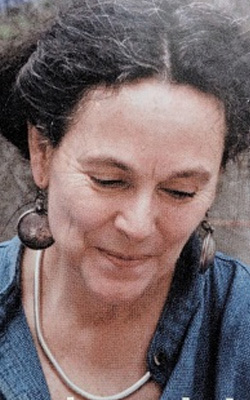
Margot Waddell
Margot Waddell is a Fellow of the British Psychoanalytical Society and Visiting Lecturer at the Tavistock Clinic. She works in private clinical practice and previously worked for many years in the NHS, as a Child and Adolescent Psychotherapist in the Tavistock Clinic’s Adolescent Department. In addition to publishing many papers and books, she has taught extensively in the UK and around the world, and remains strongly committed to this element of her work.
